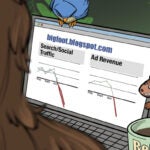 “Data-Driven Thinking” is written by members of the media community and contains fresh ideas on the digital revolution in media.
“Data-Driven Thinking” is written by members of the media community and contains fresh ideas on the digital revolution in media.
Today’s column is written by Lauren Moores, vice president of analytics at Dstillery.
The explosion in digital data, along with the evolution of the consumer voice, gives brands the opportunity to disrupt traditional relationships with their users.
For some industries, this occurred early and seamlessly. For others — bigger and more regulated, or those associated with older technology products — the disruption is just starting or still on the horizon. In all cases, harnessing the power of noisy data, including site behaviors, app activities, locations and cross-device interactions, can change the way brands interact with audiences and drive more effective marketing campaigns.
So how can brands capitalize on the noise of big data? To start, not only must they use the right data, they must identify how to use that data to their advantage. There are a number of brands that are doing this effectively, including HubSpot, MassMutual and Pitney Bowes. At the second annual ADS*CON, hosted this month by the NYU Stern Center for Business Analytics and Dstillery, these companies revealed how they use big data to disrupt.
Marketing services start-up HubSpot was built on the concept that traditional marketing is broken and needs disruption. The company recognized that digital media puts consumers in control, and old-school marketing interrupts rather than builds relationships. Their focus is on the automation of inbound marketing with an emphasis on creating the right content and channels for turning visitors into leads and, ultimately, loyal customers.
HubSpot makes it easy to create optimized cross-device, native brand content in one platform, be it a blog post, an ebook or a video, by incorporating both CRM data and analytics at every step of the marketing process. Disruption as a result of data is part of the HubSpot company manifesto. Its culture code slide deck states, “We would like to think our decisions are not data-driven but data-powered … we are obsessed with data.”
As an established financial products provider, MassMutual is in a very different position than HubSpot, yet the company also looks to use data to innovate and disrupt normal practices. Amit Phansalkar, MassMutual’s chief data scientist, stresses that big data is incredibly relevant for the financial sector. His perspective is cutting-edge for an industry that is steeped in rules and regulations.
MassMutual is able to disrupt even without a direct connection to their audience, since current life insurance customer acquisition and retention works primarily through agencies. The company recently created a campaign to reach millennials and educate them on the value of financial risk and protection against risk — a tough undertaking, as this audience is likely neither aware of nor interested in financial protection products. By capturing contextual signals generated from the digital and physical activities of consumers, including first-party, location and mobile devices, the company can activate a campaign that captures the best moments and places to connect directly with consumers.
“One of the major problems faced by our industry is the low level of trust bestowed by consumers on the industry as a whole,” explains Phansalkar. “We are taking an innovative consumer-centric approach in creating and understanding behaviors, and inferring the optimum approach, place and time to interact with consumers.”
As a result, MassMutual builds a positive brand perception, disrupting the barrier in traditional acquisition models and expanding the brand’s reach to a new prospect audience where they can build relationships, rather than facilitate transactions.
A pioneer and an innovator in the traditional business of packaging and mailing products, Pitney Bowes now has a major focus on providing data-driven global digital solutions. Pitney has an emerging Internet and mobile technology research group within its Strategic Technology and Innovation Center. Its mission is to look at the mobile channel, consumers’ mobility and how to put mobile in context.
The company brings location context awareness to mobile technologies to create new mobile experiences for clients like Twitter and Facebook. Specifically, Pitney Bowes provides the ability for clients to map its customers globally and associate contextual data to those customers, such as local points of interest, demographics, commerce, industry and personas. By tackling the sophisticated technical challenges of global ecommerce and location intelligence, Pitney Bowes helps leading brands harness the data noise and elementally change how brands market to consumers.
For some, big data is still too big and too noisy. However, there are, like these three, many progressive marketers that have figured out a way to distill the noisiness of cross-channel data to disrupt traditional marketing and their own industries.
Follow Lauren Moores (@lolomoo) and AdExchanger (@adexchanger) on Twitter.












